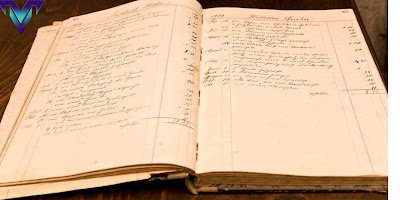Banking & Blockchain
Consider an online version of that ledger that is secure, accurate, and updated in real-time and is instantly accessible by many parties. It's known as blockchain, and it's revolutionizing global trade and finance.
The blockchain is revolutionizing transaction speed and efficiency. While the technology is currently in the proof-of-concept stage, it has the potential to have a positive impact on a wide range of industries and sectors, including banking, commerce, healthcare, insurance, and government.For one thing, businesses might have near-instant global access to their funds at any time and from any location; cash could be constantly moving to meet a company's working capital and liquidity requirements anywhere in the world.
With advancements such as real-time settlement capability, reduced counterparty risk, and greater automation, the impact on banking is particularly significant.
“This is innovative technology,” says Gautam Jain, Standard Chartered Bank's worldwide head of digitization and client access. “The industry is still figuring out what we're going to do with the revolution. banking and blockchain
How does the blockchain work?
What exactly is a blockchain? Consider a daisy chain, except instead of daisies, replace the daisies with blocks that each represent a data point. A blockchain is made up of individual blocks of data that represent a sequence of connected transactions that are linked in a sequential order.
It eliminates the need for a central authority by allowing all parties to share a digital ledger across a computer network. This is how a transaction might go: banking and blockchain
A would like to give money to B.
The transaction is represented online as a "block," a coin or a token in a database, which is broadcast to all network participants.
The transaction is approved by those in the network.
The block is added to the chain after it has been validated, creating an indelible and transparent record of transactions.
Money is transferred from point A to point B.
The blockchain's promise
Blockchain has the potential to improve the banking industry's efficiency and transparency by allowing cross-border transactions to be completed in real time and money to be traded at the same rate as information today.
“Banks should take the lead on this because the original goal of establishing a bank was to bring people together and enable trade and commerce. For the first time, you have a secure and incontrovertible mechanism to accomplish just that on a global scale,” Jain explains.
It might also have major ramifications for global trade and business. “If you take trade, which is mostly manual and paper-based due to the enormous number of parties involved in a transaction, you can make trade much more efficient by bringing all of the participants into a common infrastructure.
Blockchain began as the foundational technology behind the virtual currency Bitcoin. It turns out that the technology has considerably more applications.
“At least in our organization, that is how interest in blockchain or distributed ledger technology arose. We began researching digital currency and quickly realized that the underlying technology is far more intriguing. People now talk about blockchain far more than Bitcoin, which was the original idea that sparked this,” Jain says.
Technology, according to Jain, is an enabler rather than a disruptor in the corporate world. “Some business structures are ripe for disruption, and we should investigate how we may do so using distributed ledger technology or blockchain.” banking and blockchain
Also Like



